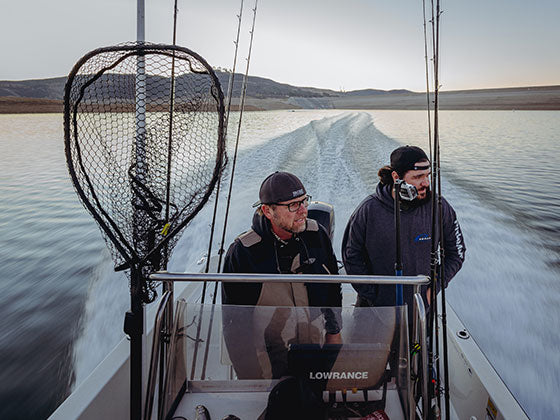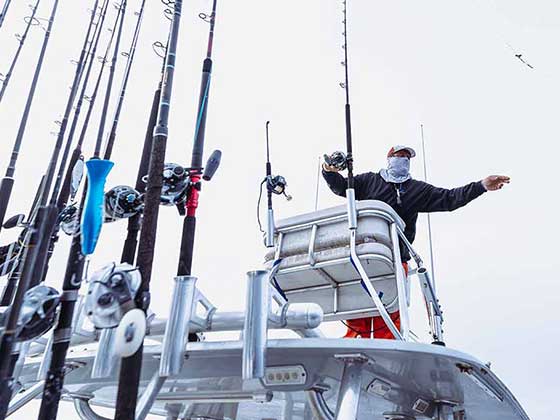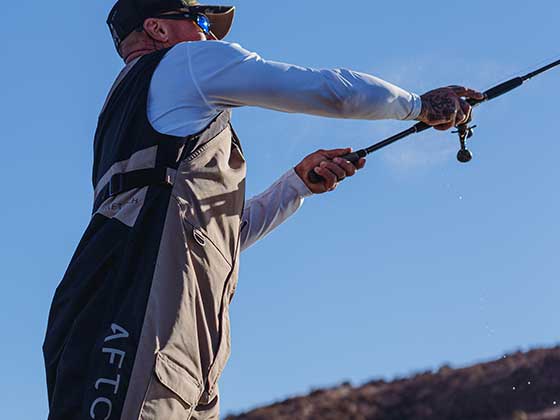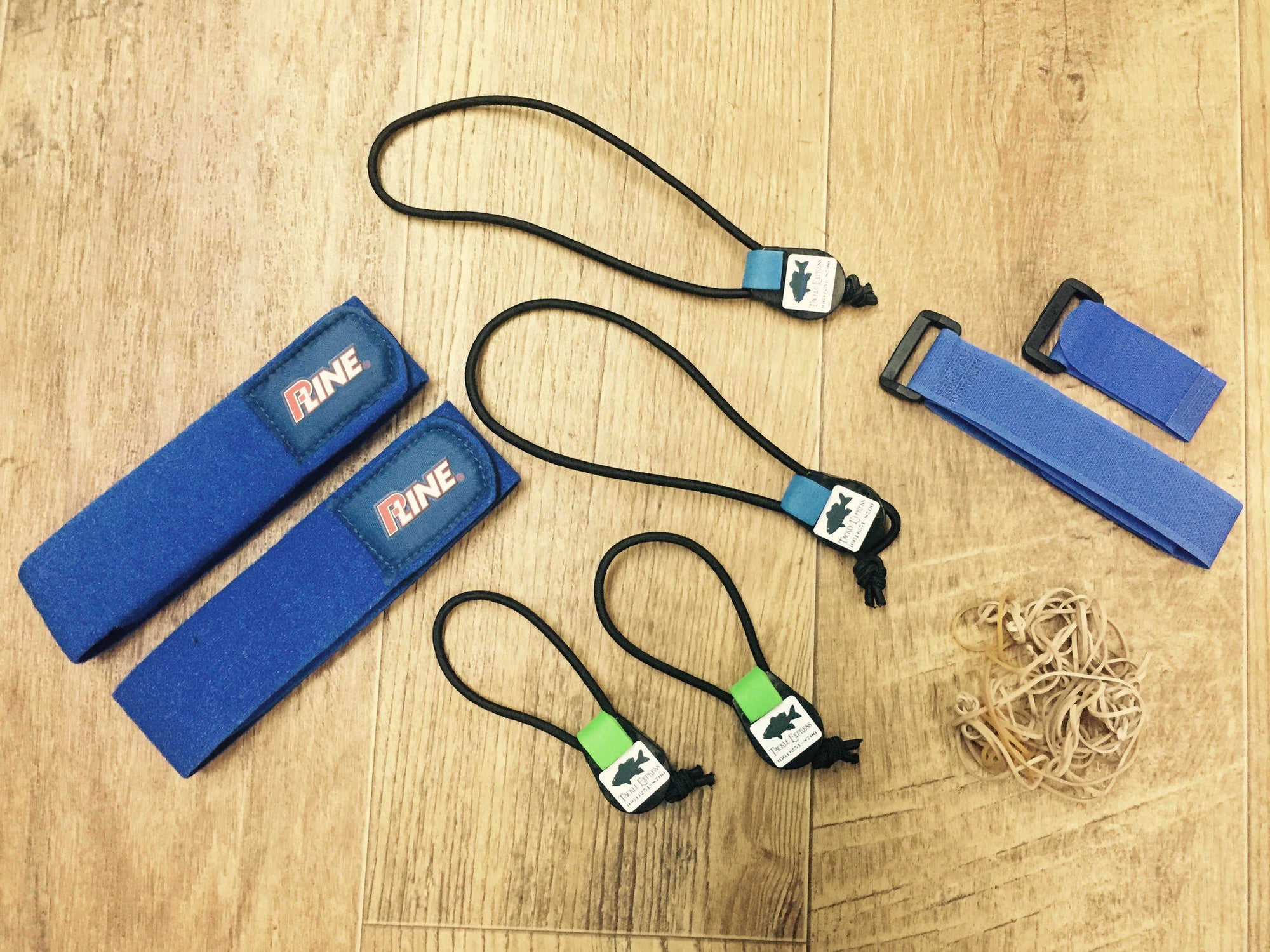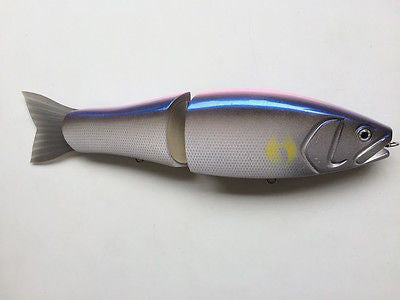Working in a tackle shop exposes you to a plethora of different opinions every day. One of the most polarizing is line preference for offshore fishing. Over the last couple of months there has been a surge in people wanting to go with a combination of braid, mono and fluorocarbon. While this definitely has its merits, there are a few other factors that come into play when choosing your line and leader combinations.
Let’s start out by discussing the different line and leader combinations. The first one that comes to mind is the classic, all monofilament. This is definitely the most cost effective option when it comes to spooling. It’s also great for beginners as mono tends to be much more forgiving when it comes to casting and line management. The drawback is that mono needs to be replaced fairly often as it loses strength every time it is fished. Sunlight and repeated exposure to water can also weaken it by breaking down the physical makeup of the line. It also has a tremendous amount of stretch that can, in some instances, lead to missed hook-sets and lost fish.
The next, and most popular, would be braided line(Power Pro, Jerry Brown, etc) to a short(3 feet to 25 yard) top shot of fluorocarbon or monofilament. This would be the most expensive option but in the long run, it's more cost effective due to the fact that the braid can last well beyond 5 years. This means you only have to replace the short top shot between fishing trips, which can cost next to nothing if you’re using mono. Also, the braid has virtually no stretch which can lead to excellent hook-sets and amazing sensitivity when bottom fishing. When you get a bite at 200 feet down, you feel it incredibly well. The same cannot be said if you were fishing straight monofilament.
The less top shot you have to braid, the better your fly lined bait will swim. This is also true if you are using egg sinkers, rubber core sinkers, or any inline weight to your bait. If you have a very short top shot and are using brightly colored line, a fabric marker can darken the line so it's less visible, especially in low light. We get the largest fabric pen available and use a razor blade to make a cut down the middle of the tip of the marker. Then simply run your line inside the cut and color as much of the line you want. We tend to color around 10 feet of it and find that a fabric marker keeps it's color longer than a sharpie. If you are interested, we have fabric markers on our website.

There are downsides to using braided line including it's abrasion on your fingers and lower quality rod guides. Unless you are using an 8 carrier braided line that is relatively soft, regular 4 carrier braided line can be abrasive and cause cuts in the crevices of your fingers. This can easily be mitigated by using Flexx Wrap finger tape. 8 carrier braided lines are more expensive and may be made of Dyneema which won't last as long as Spectra. Casting can also be a bit different with braided line as it comes off the spool different than monofilament. If the braided line wasn't put back on with tension it can dig into the rest of the line causing a backlash. With practice, lots of practice, most people can cast braided line better than mono because it has no memory and goes through the rod guides better.
Steven on a 20lb Yellowtail. Shimano Terez 9' MH with braid to short top shot.
The third and final option would be the combination of all three lines. Anywhere from half to two thirds of the reel filled with braided line, topped with however much mono is needed to fill the remainder of the spool, and finished off with a short (3 feet to 10 feet) fluorocarbon leader. This would be middle of the road when it comes to cost. The theory behind this setup would be that it offers you much needed stretch while reducing pulled hooks or breaking off. This can be an issue with the no stretch properties of braided line. The rubber band effect of mono is like an insurance policy if the fish makes sudden changes in direction. The downside is there are now three knots that can fail. In the shop, we use a knot connecting the braid to top shot called the RP knot, which is very small and strong. However, the knot from monofilament to fluorocarbon is much larger, not as strong, and bulky going through the guides. The final knot to the lure or hook depends on which one you tie but we like the San Diego Jam or Palomar. The best knot however is the knot you tie best and if that's a improved cinch knot, that's the one you should tie. Now that we’ve covered line configurations, it is time to take into account another major factor that people often don't consider when choosing their line…rod selection.

Top - Uni to Uni Knot 25# Monofilament Bottom - RP Knot 50# Braid 25# Monofilament
Rod selection is a critical piece of the puzzle and should be used with the correct line. Two types of rods come time mind. The first would be the old school graphite rod or composite of graphite and glass. That would include rods like the Calstar Grafighter and the Seeker Super Seeker series. Under load these rod tends to “shut off” very fast. This means that the tip of the rod is softer than the rest of the rod but that softer area turns to a heavy action fairly quickly. A "fast" rod generally has a heavier tip section and an "extra fast" rod has a softer tip. These types of rods are excellent for fishing monofilament. The stiffer action of the rod helps to pull the stretch out of the monofilament much faster, thus leading to a better hook-set. Conversely, if one decided to fish braided line with a short mono or fluoro top shot, the stiffness of these more traditional rods can actually work against you. Since the braid has virtually no stretch, when fished on a stiffer rod it becomes much easier to pull hooks and break line. It is a much less forgiving setup. With that being said, it is still possible to fish a braid setup on these rods by simply backing your drag down a little more than usual. The lighter drag will somewhat compensate for the lack of stretch in the setup. In the end though, having the correct rod with the correct line is crucial.
The second type of rod is a more modern, parabolic rod such as the Shimano Terez or the Phenix Axis. A parabolic rod tends to have much more “bend” to it than a traditional graphite rod. It can, at times, bend all the way through the handle. Despite having this bend, these rods have a tremendous amount of backbone and lifting power. These rods were designed specifically for fishing braided line since they take into account the lack of stretch. That is where the parabolic nature of the rod becomes important. When a fish runs, the rod bends deeper into the blank, making up for the lack of stretch in the line. The second benefit to these rods is that, due to the bend of the rod, a lot of the strain is taken out of the anglers back and arms and makes it more difficult for the fish. Instead of fighting part of the rod, the fish has to fight the entire rod because it's bending further down toward the handle.
With all of that taken into consideration, there really is no wrong way. Each person has a preference and the important thing is having confidence in your rig. Confidence is key in fishing and you'll fish different if you're not sure about your gear. If you have no confidence in what you are fishing then you’re fighting a losing battle from the get-go. My preference is braided line with a short (3 feet to 10 yards) fluorocarbon top shot using a Shimano Terez rod 8 feet to 9 feet long. I have friends that swear by straight mono and I’ve been out fished by them as many times as they've been out fished by me. If you are new to offshore fishing and you don't know what you like, try different setups and see what works best for you.
If you liked this post, please share it on Facebook or Instagram. Maybe a buddy will like it too.

